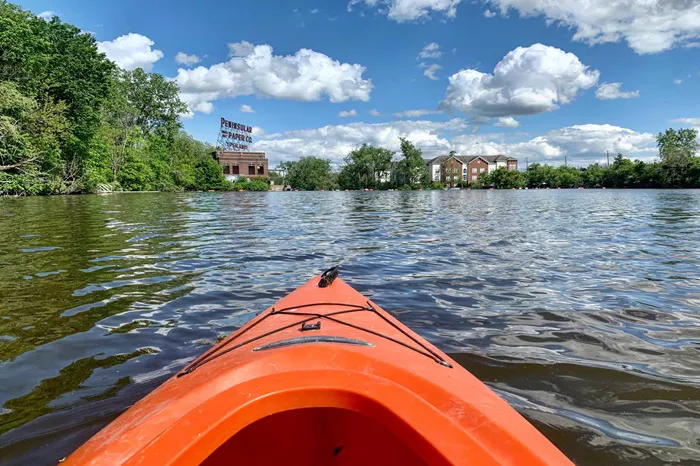The Huron River stretches over 130 miles across southeast Michigan, flowing through cities like Ann Arbor, Dexter, and Ypsilanti before reaching Lake Erie. Known for its scenic beauty and recreational appeal, the river is a popular spot for kayaking, fishing, and yes—even swimming. But many visitors wonder: Is it actually safe to swim in the Huron River? This guide will help you understand the water quality, health risks, safety guidelines, local rules, and more to help you make an informed decision.
Water Quality
Current State of Water Quality
The overall water quality of the Huron River is considered good in many areas, especially upstream. However, the river is not free of problems. Pollution from urban runoff, storm drains, and agricultural land has impacted the river’s health in various sections. Contaminants like E. coli bacteria, PFAS (per- and polyfluoroalkyl substances), and phosphorus have been detected in certain segments.
E. coli, which comes from human and animal waste, is one of the main concerns. PFAS chemicals, used in things like waterproof gear and firefighting foam, are also a significant issue, especially near industrial discharge sites. High levels of phosphorus contribute to algae blooms, which affect water clarity and oxygen levels for aquatic life.
Recent Advisories
In recent years, local authorities such as the Michigan Department of Environment, Great Lakes, and Energy (EGLE) and the Huron River Watershed Council (HRWC) have issued several advisories. For example:
PFAS Advisory (Updated): Swimming and other water activities are discouraged in areas downstream of known PFAS contamination sites, especially near the former Chrome Craft plant in Wixom.
E. Coli Alerts: After heavy rainfalls, multiple testing sites along the river show spikes in E. coli levels. Authorities often issue temporary no-contact warnings until the levels subside.
Do Not Eat Fish Advisories: Although not directly related to swimming, these alerts highlight ongoing contamination that could also affect swimmers.
Health Risks
What You Might Be Exposed To
Swimming in natural water always carries some risk, but certain issues are more prominent in the Huron River:
Bacterial Infections: E. coli can cause stomach cramps, diarrhea, and in rare cases, more severe illness. Cuts or open wounds increase the risk.
Algal Blooms: Blue-green algae (cyanobacteria) can release toxins that irritate the skin, eyes, or even cause respiratory issues.
Chemical Runoff: Runoff from nearby roads, lawns, and farms can introduce pesticides, oils, and heavy metals into the water.
How to Reduce Risk
Avoid swimming after heavy rainfall (within 48 hours). This is when runoff and bacteria levels spike.
Don’t swim with open cuts or wounds. These are entry points for bacteria.
Shower after swimming to rinse off any contaminants.
Check for local alerts on E. coli or PFAS contamination before you go.
Supervise children closely, as they are more vulnerable to waterborne illnesses.
Safety Guidelines
General Safety Tips for Swimming in Rivers
Swim in designated areas: Many parks along the Huron River have safe zones for wading and swimming.
Avoid fast-moving water: Strong currents, especially near dams or during high water, can be dangerous.
Don’t dive: River beds can change and may hide rocks or debris.
Swim with a buddy: Don’t go alone, especially in less monitored areas. Wear water shoes to protect your feet from sharp objects.
Keep an eye on weather conditions: Sudden storms can cause river levels to rise quickly.
Local Regulations
Where You Can and Cannot Swim
There are no universal rules banning swimming in the Huron River, but local jurisdictions manage their own stretches of the river.
Ann Arbor: Swimming is allowed in certain sections, such as Island Park and Argo Park, but discouraged during high bacteria alerts.
Dexter-Huron Metropark: Wading is permitted, but swimming is not officially designated.
Lower Huron Metropark: Offers designated swimming areas, but they are subject to closures based on water quality.
Always check local park websites or contact the park office for up-to-date information.
Recreational Opportunities
If swimming doesn’t feel safe or appealing, the Huron River still offers many ways to enjoy the water:
Kayaking and Canoeing
The river is a favorite for paddlers, with well-maintained launch points, calm stretches, and even man-made whitewater features in Ann Arbor.
Fishing
Anglers enjoy fishing for bass, sunfish, and catfish. However, due to contamination, some areas have “Do Not Eat” advisories.
Paddleboarding and Tubing
Stand-up paddleboarding (SUP) and tubing are fun, less immersive ways to experience the water.
Birdwatching and Nature Walks
The river’s greenbelt is full of wildlife and hiking trails. You’ll find herons, turtles, and even the occasional bald eagle.
Environmental Conservation
Efforts to Improve the River
The Huron River Watershed Council (HRWC) and other groups are working hard to clean and protect the river:
Stormwater Management Programs: Helping towns reduce runoff pollution.
River Cleanup Events: Volunteers remove trash and debris.
Water Quality Monitoring: Regular testing to track contaminants and bacteria.
PFAS Removal Initiatives: State and local agencies are working on long-term solutions to reduce chemical contamination.
How You Can Help
Pack out all trash when visiting the river.
Use eco-friendly sunscreen and bug sprays.
Don’t feed wildlife; it disrupts natural behaviors.
Stay on marked trails to avoid damaging vegetation.
Support local conservation groups with donations or volunteer time.
Conclusion
So, is it safe to swim in the Huron River? The answer is: sometimes. In many areas and under the right conditions, swimming can be a safe and enjoyable activity. But it requires awareness and preparation. Always check local advisories, avoid high-risk conditions like recent rainfall, and follow safety tips. If you’re not comfortable swimming, the Huron River offers a wide range of other activities that let you enjoy its beauty while staying dry. And by respecting the river and supporting conservation, you help keep it safe for everyone—now and in the future.

